5 Oct 2022
Pet pig reproduction problems
Graham Duncanson covers issues regarding breeding, gestation and parturition as part of a series on suids.
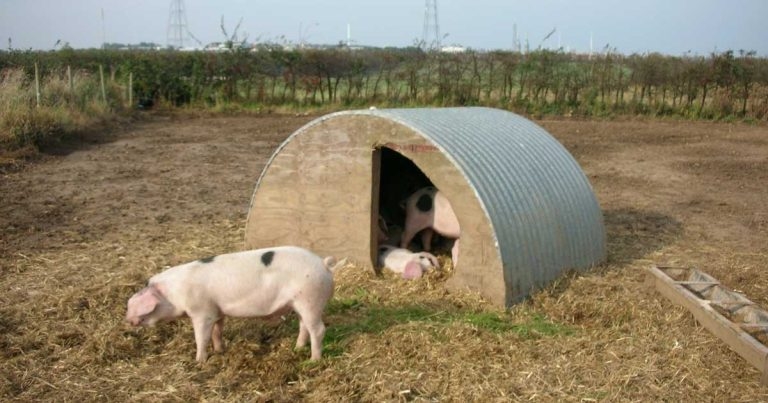
A routine health visit is worthwhile before breeding.
In this article, we will deal with reproduction problems in smallholder and pet pigs.
Making plans before an emergency call-out
I think it is vital that at least a veterinary surgeon who has some experience with pigs gives the client a telephone call before any reproduction occurs.
Preferably, a routine health visit is arranged. Then the facilities can be assessed together with disease control measures.
A report should be written and a follow-up should be carried out.
Safe handling facilities for boars and sows must be organised.
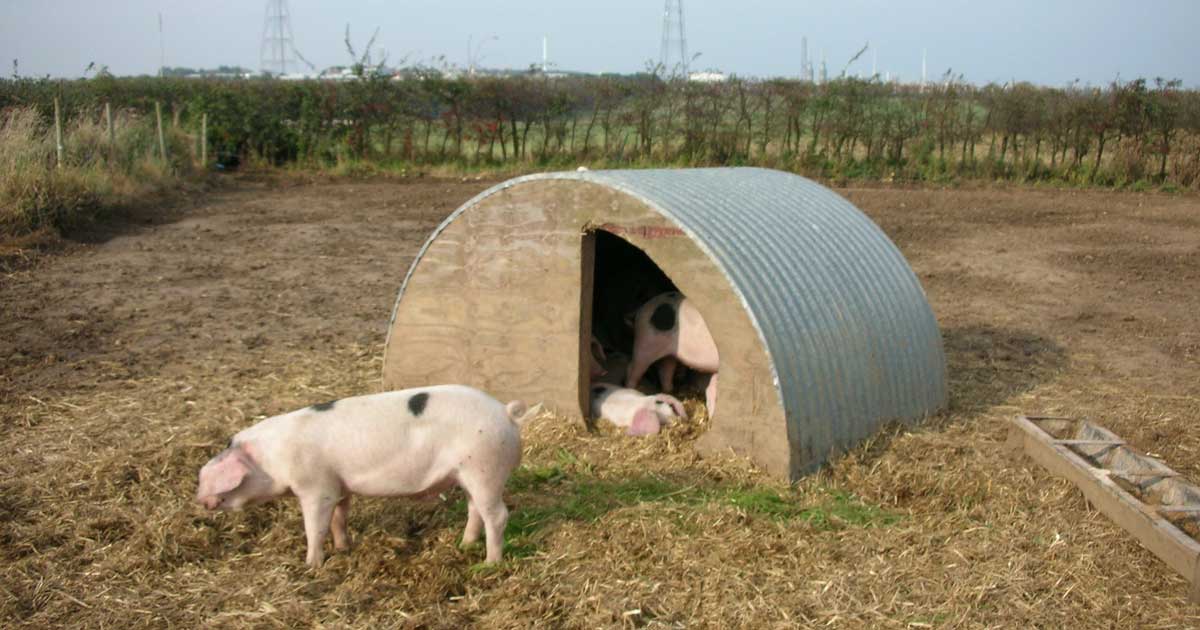
Pregnancy
Pet pigs have the same reproductive parameters as commercial pigs.
The length of gestation is 114 days, with a normal variation of 2 days. The breeding cycles occur all year round, with oestrus occurring every 21 days with a variation of 1 day.
Pet pigs normally have about six piglets in a litter. This will depend on the breed. After six litters, the litter size will tend to diminish.
It should be stressed to pet pig owners that breeding is a specialised affair and should not be undertaken by amateurs.
As mentioned in part one of this article (VT52.30), castration should be advised to be carried out within seven days of birth unless slaughter is anticipated before puberty, which normally occurs soon after 22 weeks of age.
AI
AI is very useful in smallholder pigs as it negates the need for a boar, therefore saving the capital outlay not only of the boar, but also of the extra buildings and pens required.
Feeding costs can be saved. Disease control is much easier if boars are not borrowed. New genetic material can easily be introduced without the need to change boars.
Safety is important as boars can be dangerous – particularly for children in smallholder situations.
Detusking boars
Old boars will develop long, extremely sharp canines. These may be broken off by trauma, but will not cause any problems. When they are left, they are dangerous to pig handlers and also to other pigs.
These do not have a pulp cavity or nerve supply above the gingival margin, and so can be cut off at this point without causing pain or infection. Restraint is the main problem. One simple way is to cut them off while a boar is mounting a sow. Otherwise, the boar should be restrained in a crate and held with a pig snare.
The ideal method is with equine molar shears. Embryotomy wire may be used, but this will become very hot and will continually break.
Because of the long length of time, the boar is liable to become fractious. Sedation with azaperone is not effective and a general anaesthetic may be required. This increases the risk of the procedure.
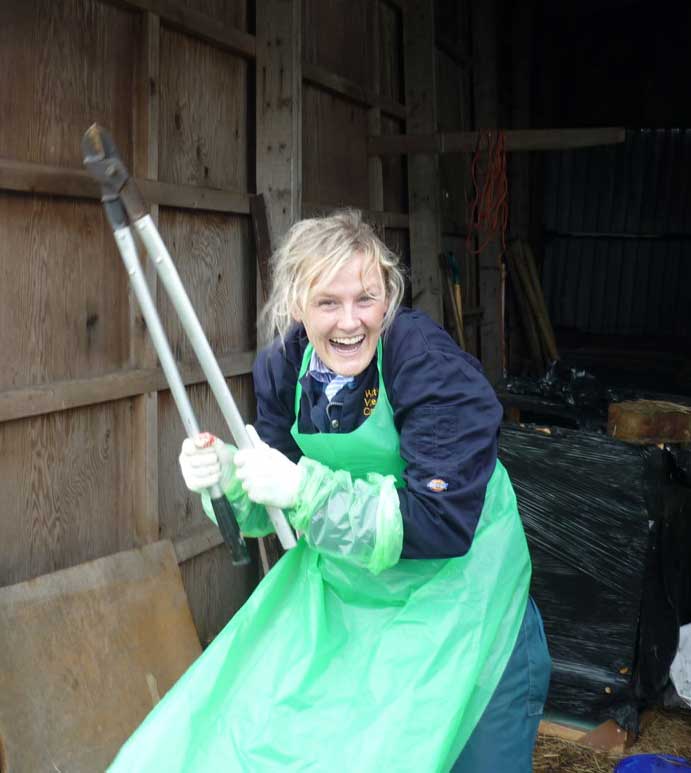
Pregnancy diagnosis
Observation of the gilt or sow returning to oestrus is only 85% reliable. Real-time transabdominal ultrasonography after 45 days is the method of choice.
Individual sows may be tested for pregnancy by a vaginal biopsy after 36 days.
Abnormalities of parturition
More problems persist with parturition in pet pigs than in commercial pigs as the owners fuss over them too much at term.
A vaginal examination should be carried out. The scenarios likely to encountered are:
- The first stage of labour has not been accomplished. The sow or gilt should be left alone for four hours. If no further developments have occurred, the animal should be given an injection of prostaglandin.
- The second stage of labour has been reached, but the cervix is not fully dilated. The rectal temperature should be checked for pyrexia and the mammary glands should be checked. If any abnormalities are found or pyrexia is present, antibiotics and NSAIDs should be given. If all appears normal, the animal should be given an injection of prostaglandin and revisited in four hours. If, at that time, no further action has occurred, two international units (IU) of oxytocin should be given intramuscularly.
- If a piglet can be felt, it should be drawn. Another dose of oxytocin should be given. This may be repeated at four-hourly intervals until parturition is complete.
Vaginal prolapse
If vaginal prolapse occurs before parturition, a Buhner suture should be placed with a 20cm seton needle and tied with a bow.
This can be untied for future examinations, but should be left in place for two days after parturition is finished.
Uterine torsion
If a complete torsion is felt per vagina, this may be corrected by giving the sow or gilt a general anaesthetic and rolling the pig in the direction of the twist.
If this is not successful or the twist is just in a single horn, a caesarean section should be carried out.
Farrowing fever complex
Farrowing fever complex is the most common problem found in parturient pigs.
The presenting signs are slow parturition; inappetence; constipation; a hard, painful udder; failure to pass all the placentae; and pyrexia. Escherichia coli is the most common organism and should be treated with appropriate antibiotics (normally oxytetracyclines, which can be given by IM injection, both in a short and long-acting formulation. They can also be given in the water).
NSAIDs and oxytocin should be given; 500ml of liquid paraffin per day on top of the water is useful.
Farrowing fever complex is a syndrome that has been called mastitis, metritis, agalactia (MMA) syndrome. This description can be misleading because it assumes that all three clinical signs are always present. In the author’s experience, this is rarely the case.
If parturition is slow or if considerable human intervention has occurred, the main sign will be metritis. This will require specific treatment for metritis, which may be different from the treatment for mastitis. Agalactia also requires specific treatment.
MMA has received a large amount of coverage in both the veterinary and the lay press. It is sometimes called “milk fever”. This is unwise as it is totally different from milk fever that is so common in dairy cows. Pigs do not suffer from hypocalcaemia. Calcium borogluconate should never be administered to pigs as it causes a severe reaction if administered subcutaneously.
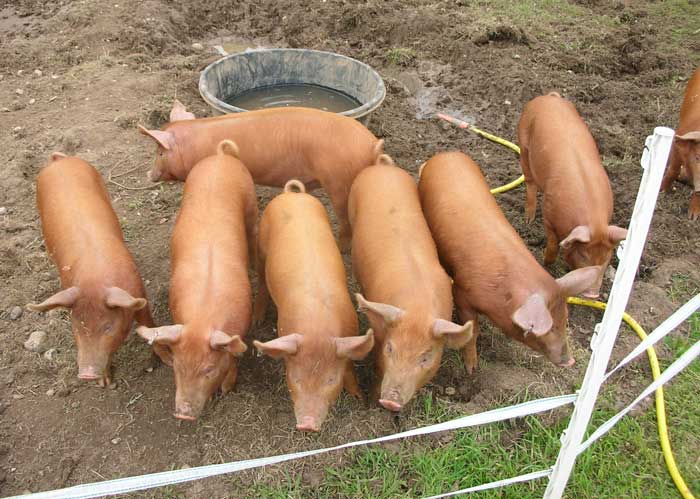
Caesarean section
The sow should be given a general anaesthetic (as described previously). Antibiotics and NSAIDs should be given.
With the sow in lateral recumbency, the upper hindleg should be drawn back. The area from the hindleg forward, including the upper mammary glands and half the flank, should be cleaned aseptically. As the general anaesthetic is unlikely to last long enough to totally complete the surgery, local anaesthetic should be infiltrated for a 25cm incision in a paramedian position just above the mammary gland.
Hopefully, the sow will remain lying still as the area is desensitised even when some recovery from the general anaesthetic is observed. A 20cm incision should be made through the skin, muscle layers and peritoneum, 1cm above the mammary gland, as far caudal as possible.
The body of the uterus should be brought up to the incision. A 12cm incision should be made into the uterus, or if a torsion is observed then the incision should be made in this horn. An assistant should hold up both sides of the incision with two pairs of uterine forceps. It is vital that all the piglets and their placentae are removed and placed in a warm box. The uterus should then be closed with a single continuous layer of Lembert sutures with absorbable suture material.
Thirty IU of oxytocin should be injected intramuscularly, and the uterus should be returned to the correct orientation and position. The abdominal musculature, including the peritoneum, should be sutured with two rows of continuous mattress sutures using absorbable suture material.
The skin should then be closed with single horizontal mattress sutures. Number 1 polypropylene material on a swaged 48mm, 12.5mm reverse cutting needle is suitable for the task. These skin sutures need to be very close together as the piglets may interfere with them when suckling.
Uterine prolapse
In many situations of uterine prolapse, euthanasia is the most humane option – particularly if the piglets can be fostered on to another sow. However, correction is feasible under a general anaesthetic.
Antibiotics and NSAIDs should be given. The sow should be hoisted with her ventral abdomen uppermost in a strong crate. Her hocks should be tied to the top of the crate as wide apart as possible. A conventional straw bale should be placed under her hindquarters so that her head and forequarters are low down at the front of the crate. The prolapsed uterus should be laid out on clean polythene on the bale. Careful examination should be carried out after cleaning to find any uterine tears. These should be sutured with mattress sutures of absorbable material, making sure that the peritoneal surfaces are opposed.
The vulva should be lubricated before inserting one hand gently into the tip of one uterine horn and slowly replacing it into the sow. When the tip is well over the pelvic brim, a flicking motion together with gravity will make the uterine horn descend into the correct position. The process should be repeated with the second horn and the body of the uterus.
After the practitioner is satisfied the uterus is in the correct position, 30IU of oxytocin should be injected intramuscularly. The vulva should be closed with a Buhner suture, as described previously.
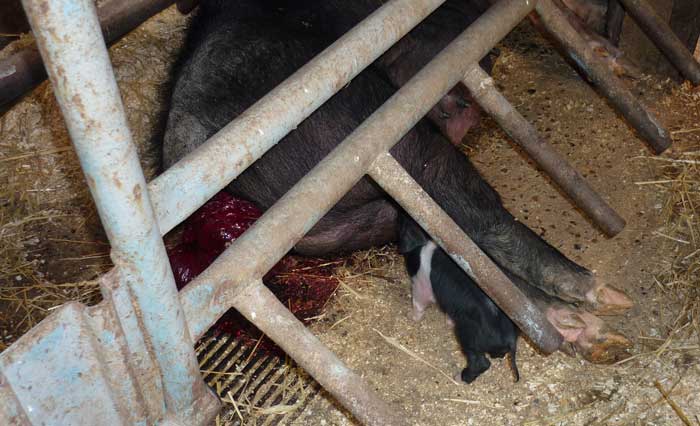
Post-parturient vaginal discharge
Post-parturient vaginal discharge is a common sequel to parturition.
Antibiotics and NSAIDs are only required if the sow is off her food or pyrexic. Oxytocin immediately after an assisted parturition may be helpful.
Chronic mastitis
With chronic mastitis, one or more mammary glands will be large, swollen and non-productive. They are rarely painful, and the sow does not appear to be ill or have pyrexia. The condition may be caused by a variety of organisms – Arcanobacterium pyogenes is the most common. Antibiotic treatment, even if prolonged, will not be effective. The gland should not be lanced.
If the gland ulcerates, humane destruction is indicated. If the gland does not burst and the sow is kept for subsequent breeding, it is prudent to give antibiotics in a preventive manner at subsequent farrowings in the hope of preventing further glands becoming infected.
